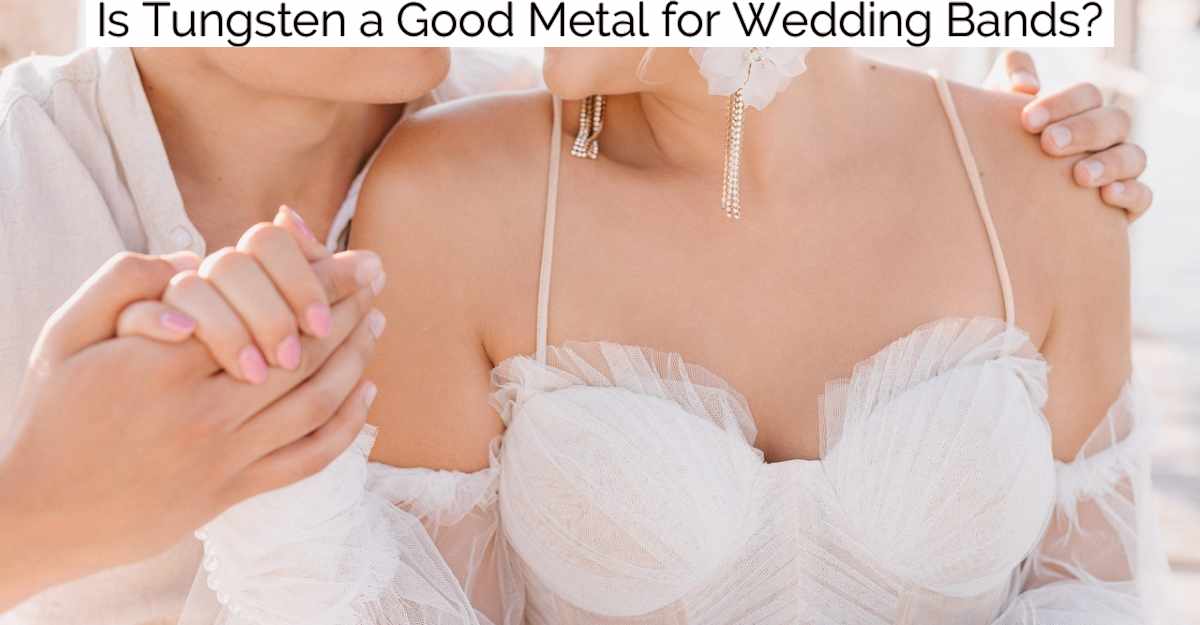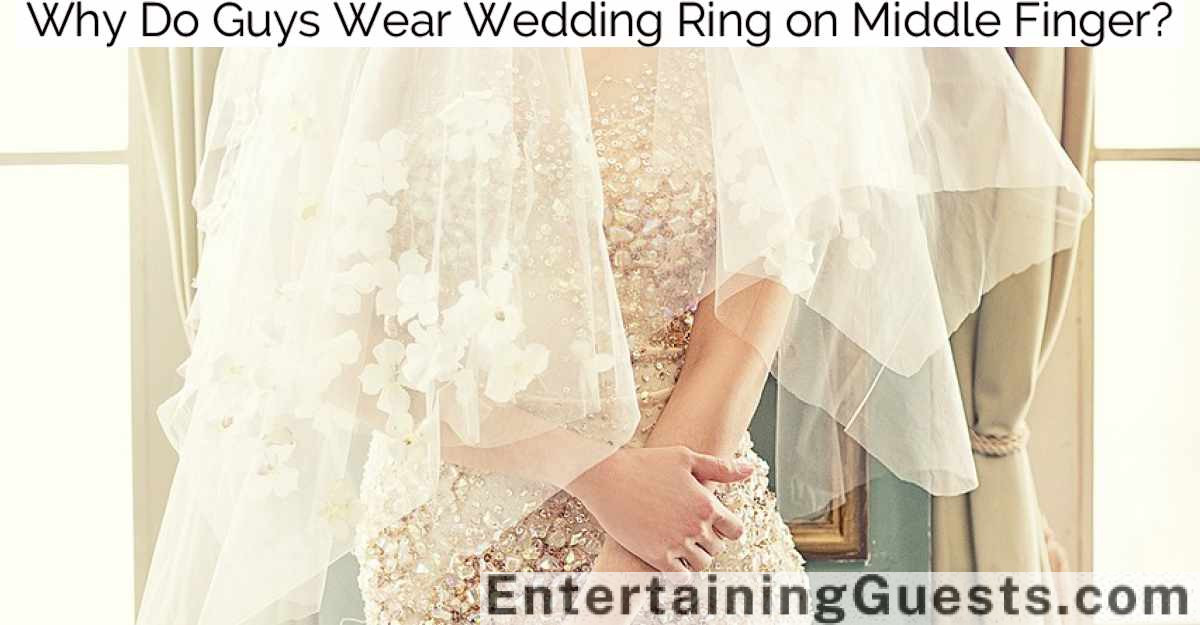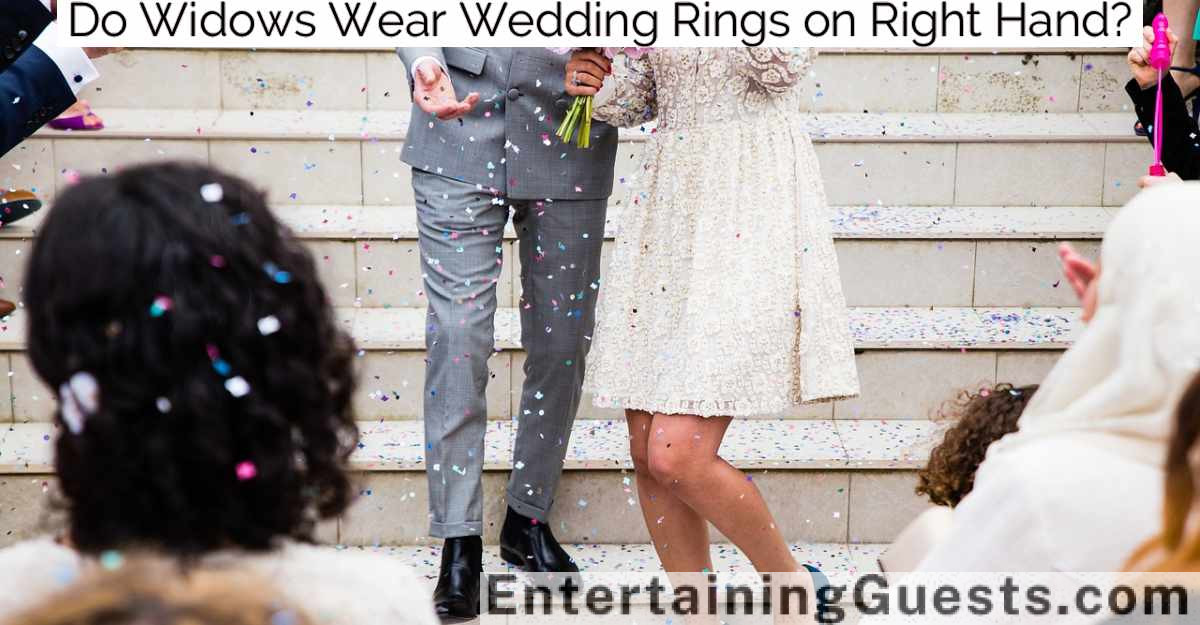Yes, tungsten is an excellent choice for wedding bands. Its unique gray luster and dense form offer a modern alternative to traditional styles.
As one of the hardest materials, tungsten is highly resistant to scratches, which ensures that the band remains visually flawless, symbolizing enduring love and commitment. The metal is also hypoallergenic, making it ideal for those with sensitive skin.
Tungsten bands come in a variety of designs, including inlays of wood, carbon fiber, and precious metals, allowing each ring to be a unique representation of a couple’s journey.
Despite its toughness and durability, tungsten is surprisingly budget-friendly and requires minimal maintenance, eliminating the need for frequent polishing. This combination of beauty, durability, and affordability makes tungsten a compelling option for wedding bands.
Understanding Tungsten’s Properties
While many may not immediately recognize its attributes, tungsten possesses a unique set of properties making it an intriguing choice for wedding bands. Though it’s often overshadowed by more traditional metals like gold and silver, tungsten’s allure lies in its profound symbolism and modern aesthetic.
It boasts a handsome gray sheen that can be polished to a mirror-like finish or textured to enhance its natural ruggedness. Tungsten’s inherent heft speaks to its metaphorical weight, embodying the strength and permanence of matrimonial commitment. This density guarantees that a tungsten wedding band feels substantial on the wearer’s finger, a constant reminder of the enduring vows exchanged.
Additionally, its hypoallergenic nature makes it a suitable option for those with sensitive skin, guaranteeing that it’s as comfortable as it’s beautiful. Artistically, tungsten offers a canvas for unique design elements.
It can be inlaid with precious materials like gold, silver, or even wood and carbon fiber, creating a striking contrast that appeals to those with an eye for sophisticated, contemporary jewelry. This versatility allows couples to customize their rings to reflect their personal style and the uniqueness of their bond.
Durability and Scratch Resistance
Tungsten’s exceptional durability and scratch resistance further enhance its suitability as a material for wedding bands. This robust metal, deriving its strengths from an inherent hardness that rivals that of diamonds, stands as a paragon of longevity. Its resistance to scratching is paramount, especially when compared to softer metals like gold and silver, which can succumb to daily wear and tear.
Forged in conditions of high heat and intense pressure, tungsten carbide—the form most often used in jewelry—emerges as almost invincible in everyday environments. It doesn’t bend out of shape or wear down over time, making it an ideal emblem of eternal love and commitment that many couples seek in a wedding band.
Moreover, tungsten’s density and weight contribute to its substantial feel on the finger, a constant, comforting reminder of the wearer’s vows. Unlike other metals that might degrade or tarnish, tungsten maintains its pristine condition without the need for frequent polishing.
This low maintenance aspect guarantees that the ring continues to symbolize the unblemished, enduring nature of the bond it represents, allowing it to be treasured and worn for decades without compromise.
Aesthetic and Design Options
Tungsten offers a surprising range of aesthetic choices for couples seeking both unique and traditional designs in wedding bands. Its innate luster and sleek, gunmetal gray finish provide a modern twist on the classic symbol of love and commitment.
For those who prefer a hint of color, tungsten bands can be crafted in black, white, or even gold-toned finishes through advanced coating techniques that enhance the ring’s appearance while maintaining its toughness.
The metal’s versatility extends to its ability to be paired with other materials. Inlays of precious metals like gold or platinum, as well as organic materials such as wood or carbon fiber, create striking contrasts that appeal to diverse tastes.
These combinations not only elevate the design but also allow personalization that reflects a couple’s unique style and story.
Furthermore, tungsten carbide, the most commonly used form of tungsten in jewelry, can be engraved with intricate patterns, from Celtic knots to customized inscriptions.
This capability allows for an additional layer of customization, making each band truly one-of-a-kind. The precision with which tungsten is worked into fine jewelry showcases not only the skill of the artisan but also the expressive potential of the metal itself.
Cost Comparison With Other Metals
Exploring the cost-effectiveness of tungsten compared to other popular metals used in wedding bands reveals its considerable value. Tungsten, known for its robustness and luster, isn’t just a symbol of enduring commitment but also a financially savvy choice.
In stark contrast to gold and platinum, whose prices often stretch to several thousand dollars per band depending on market fluctuations, tungsten offers a more budget-friendly alternative without compromising on elegance.
A typical tungsten wedding band may range from $100 to $300, starkly lower than the starting prices for platinum and gold bands, which can soar well above $600. This price variance stems largely from the rarity and mining costs associated with precious metals compared to the more abundant tungsten.
Moreover, when considering the lifetime costs, tungsten bands require less maintenance. Unlike gold or silver, which may necessitate regular polishing and can incur repair costs due to their malleability, tungsten’s hardness guarantees that it remains unscathed from daily wear and tear, further driving down its long-term expense.
This makes tungsten not only a practical choice but also an artistically sound investment, marrying durability with cost-efficiency in a seamless blend of functionality and artistry.
Potential Drawbacks and Considerations
Despite its many advantages, tungsten’s appeal comes with certain limitations that warrant careful consideration before choosing a wedding band. One significant drawback is tungsten’s inherent brittleness. Unlike gold or platinum, tungsten can shatter or break under severe impact, making it less ideal for those with active lifestyles or occupations that involve heavy physical labor.
Additionally, tungsten rings can’t be resized. This characteristic means that any significant change in finger size over time could necessitate buying a new ring, potentially adding unforeseen costs and inconvenience.
Moreover, tungsten’s very hardness, while beneficial for resisting scratches, also means it lacks the malleability and warmth often associated with more traditional metals. This can translate to a less personalized touch regarding design and craftsmanship.
For those who value unique, artisan-crafted rings, the options for customization with tungsten are particularly more limited.
Conclusion
Tungsten, a beacon of durability and aesthetic versatility, excels as a choice for wedding bands. Its remarkable scratch resistance guarantees a lasting gleam, outshining softer metals prone to wear. Although budget-friendly compared to gold or platinum, potential buyers should note tungsten’s brittleness under extreme pressure. Nevertheless, for those valuing longevity and modern flair in their symbol of commitment, tungsten offers an economically savvy, stylish alternative that endures as steadfastly as true love itself.




